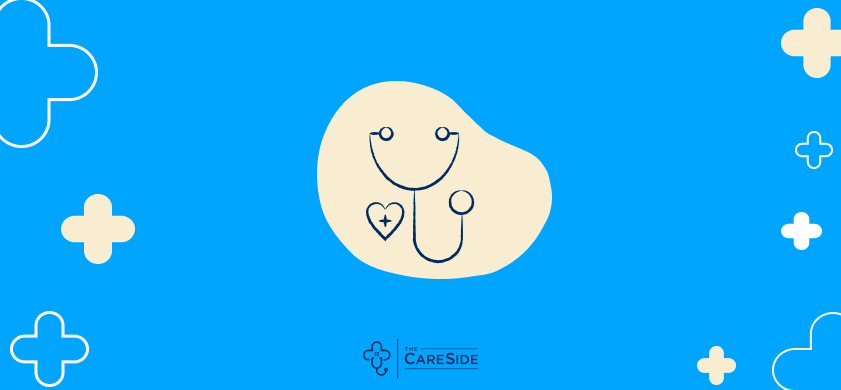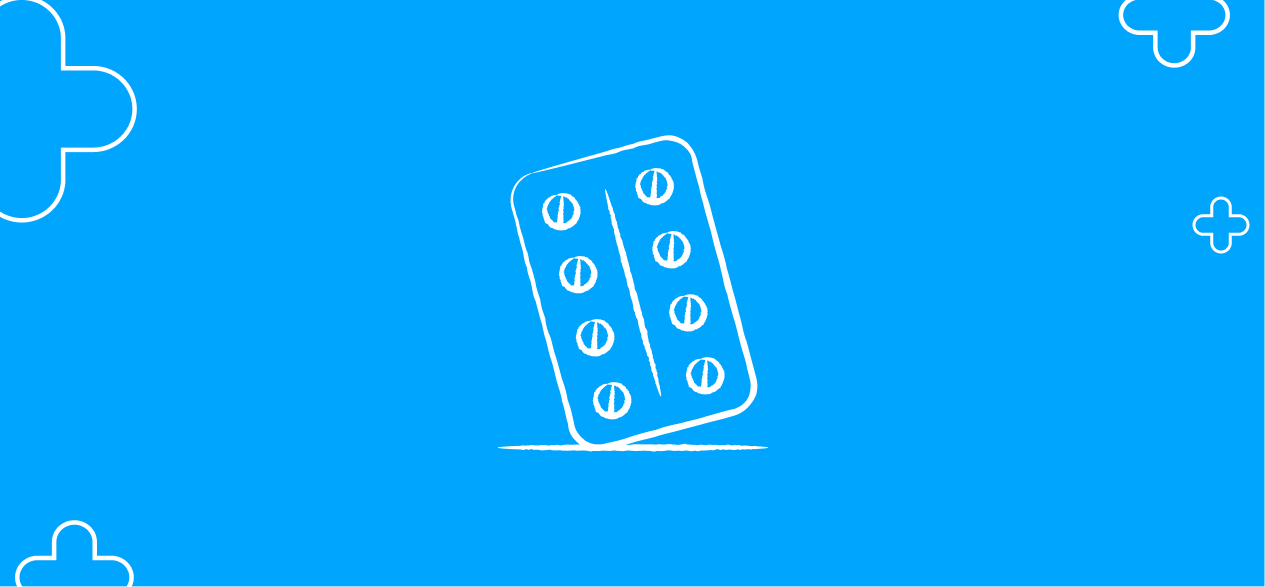
Home Care for Diabetes
Understanding Diabetes
Diabetes Explained
Diabetes mellitus, also known as diabetes, is a chronic condition that affects how food is turned into energy.
Most of the food we consume is broken down and converted into sugar, or glucose, and released into the bloodstream. When blood glucose levels increase after we eat, the pancreas releases insulin, an essential hormone that regulates the body’s energy supply by helping our cells turn blood sugar into fuel.
For someone living with diabetes, the body’s insulin is either used ineffectively or not created at all, meaning blood glucose levels remain elevated instead of getting burned as fuel. That leads to a harmful cycle of too much blood sugar building up in the bloodstream, which can cause a wide variety of other health conditions over time.
Types of Diabetes
Roughly two million people in Australia live with diabetes, and it is currently the seventh-most common cause of death by disease in the country.

Diabetes Australia calls it the ‘epidemic of the 21st Century’ as more than 300 Australians develop diabetes every day, which is one person every five minutes. Aboriginal and Torres Strait Islander communities have been inflicted the most in recent years, and generally, the impact of diabetes is higher in lower socioeconomic and remote areas.
All types of diabetes are serious and can lead to complications if not treated correctly. The encouraging news is most cases of diabetes can be managed with lifestyle adjustments and proper home care, meaning a high quality of life is still attainable.
- Type 1 Diabetes: A lifelong autoimmune disease with no known prevention, cause or cure. It can be diagnosed at any age but typically develops in people 30 and younger. Type 1 diabetes accounts for about 10% of all diabetes cases in Australia.
- Type 2 Diabetes: A condition with strong genetic and family-related risk factors, as well as lifestyle risk factors including age, ethnicity, unhealthy diet and lack of physical activity. It usually develops in people aged 45 and older but is becoming increasingly prevalent among younger age groups. Type 2 accounts for 85-90% of diabetes cases in Australia.
- Gestational Diabetes: This type of diabetes occurs during pregnancy (often in the second or third trimester) among women who haven’t been previously diagnosed with diabetes. It can lead to complications for the mother and the baby if left untreated.
- Pre-diabetes: A condition where blood glucose levels are elevated, but not high enough to be officially diagnosed as diabetes. It is a risk factor for Type 2 diabetes and cardiovascular disease; about 16 out of 100 adults in Australia have pre-diabetes.
- Other Diabetes: Some less-common forms of diabetes are classified as ‘Other’, including conditions affecting the pancreas and endocrine system and diabetes triggered by medications needed to manage other health conditions. New-onset diabetes caused by the COVID-19 virus and other viral infections also fall in the ‘Other’ category.
Home Care for Diabetes
Medication Management for Diabetes Care
For most people with diabetes, self-care is an essential part of diabetes treatment. It includes eating healthy, being physically active, monitoring blood sugar levels, and proper medication management.

Every diabetes case is different. Some people might take tablets or receive injections, while others who have been recently diagnosed might not need any medication at all. Dosages and scheduling can also change over time. The National Diabetes Services Scheme (NDSS) has detailed fact sheets and FAQs for the most common scenarios, and people living with diabetes should always follow the direction of their healthcare team and care plan.
Monitoring Blood Sugar Levels at Home
People living with diabetes often need to monitor their blood glucose levels (BGLs) at home to ensure they are staying within their target range. Closely monitored levels can help health professionals develop a more precise management plan. But this practice also helps people with diabetes understand the relationships between their BGLs and certain medications, foods and other lifestyle choices.
Diabetes Australia has a thorough guide about the best times and strategies for monitoring BGLs at home. Fortunately, technology has streamlined the monitoring process over the years, as digital monitoring tools, wearable sensors and electronic insulin pumps have become important components of diabetes home care.
Exercise and Physical Activity
Why Exercise is Important for Diabetes Care
Type 2 diabetes is not caused by being overweight or obesity—that is a common misconception. Some people who are overweight won’t develop diabetes, while others who maintain a healthy weight will. Weight and sedentary lifestyles are risk factors, however, so exercise and physical activity are important parts of any daily routine involving diabetes home care.
For people living with diabetes, care providers and physiotherapists can offer the best course of action—especially for diabetes patients with BGLs that are consistently out of range. Those who self-monitor their BGLs might be asked to check their levels before, during and after exercise; levels tend to oscillate depending on the type and intensity of exercise. This guide from NDSS breaks down other things to consider regarding physical activity, including how people managing peripheral neuropathy or nerve damage can approach more active lifestyles.
Home care for diabetes can be a lot to keep up with.
We’re here to help you navigate.
Exercise Ideas for Diabetes Management
Some activity is better than none at all—even if it’s at a slow pace or separated into shorter, more manageable increments. For someone with diabetes, regular exercise for 30 minutes per day can help insulin work better, reduce insulin resistance and BGLs, strengthen bones, and improve joint and muscle movement while reducing blood pressure and the risk of heart disease.

Though people with diabetes have certain considerations to account for—such as hypoglycemia and insulin dosages—they can still enjoy many of the same aerobic and resistance training activities as others. Swimming, cycling, yoga, golfing, weight training, Tai Chi, dancing, and water aerobics are all excellent options. Everyday activities, such as gardening and walking the dog, count as exercise, too!
Here are some more ideas for regular physical activity:
- Set aside the same time every day for exercise so it becomes routine
- Exercise with a friend or in a group to stay motivated
- Set attainable goals and maintain an exercise journal to track your progress
- Explore NDSS’s ‘Ready Set Go, Let’s Move Online’ program, which has short, readymade exercise modules that make it easy to get started
- Watch this on-demand webinar for exercising safely with diabetes
- Increase daily activity slowly but steadily by walking to places, standing while on the computer, and most importantly having fun and rewarding yourself—the more enjoyable physical activity is, the easier it is to be consistent
Exercise, meal prep, managing BGLs—we can help with all of it.
Chat with our team today.
Healthy Diet for Diabetes Care
The Importance of Healthy Eating
In addition to exercise, healthy food is another key component of diabetes home care. The two in conjunction can help in many facets, such as reducing the risk of heart disease, improving high blood pressure, lowering cholesterol and enhancing sleep and overall well-being.
There is no such thing as a diabetic diet.
Much like with physical activity, people living with diabetes can generally enjoy the same foods as everyone else. The difference is that healthy dietary choices help people with diabetes keep blood sugar levels within their target range, which reduces the risk of complications. Diabetes Australia suggests people with diabetes enlist an accredited practising dietitian to help with meal planning and individualised dietary guidance.
To find a dietitian in your area:
- Visit Dietitians Australia and search for ‘find a dietitian’ or call them on 1800 812 942
- Contact Diabetes Australia and speak with a diabetes educator
Dietary Choices and Meal Planning
The Australian Dietary Guidelines lay out healthy eating habits for the entire population, including people living with diabetes. Based on the latest scientific research, the guidelines are organised into two groups: Healthy Eating for Adults and Healthy Eating For Children.

In-home care for diabetes can generally follow those guidelines. Managing diabetes with healthy eating means:
- Opting for whole, unprocessed foods instead of processed and packaged foods
- Eating regular meals spread evenly throughout the day
- Monitoring intake of fats, especially saturated fat
- Scheduling snacks between meals if you’re on insulin or diabetes tablets
- Knowing the types (and amounts) of carbohydrates that work for your plan
Many people living with diabetes experiment with low-carb eating, which can lower blood sugar levels and promote weight loss. Review a detailed report from Diabetes Australia on low-carb eating, or watch a Q&A on this topic.
Low-carb or not, people living with diabetes can benefit greatly from consulting a dietitian and meal planning based on their individual needs, goals, lifestyle and care plan. Generally speaking, though, mindful eating and opting for whole grains, vegetables, fruits, lean meats, fish, nuts and other unprocessed foods is a great place to start.
Complication Prevention
Personalised Health Care Team
When someone is diagnosed with diabetes, their doctor gives them a target blood sugar range that is best for them. Indeed, even though diabetes has become increasingly common, care plans are quite individualised starting with BGLs and going from there.

That’s why the best home care and self-management for diabetes is multi-faceted: it includes blood sugar monitoring, dedicated medication management, regular exercise and healthy dietary habits based on the individual and their needs.
Outside the home, it’s common for a diabetes healthcare team to feature professionals from various fields, such as general practitioners (GP), accredited dietitians, credentialed diabetes educators, endocrinologists, optometrists, podiatrists and physiotherapists. Again, though, it’s not a one-size-fits-all matter: people living with diabetes should seek support from professionals who best match their care plan and goals.
Diabetes Self-Care Tips
Complications of diabetes can affect many parts of the body, especially the heart, eyes, feet and kidneys. That’s why diabetes healthcare teams are often so varied—each expert specialises in different parts of the body, ensuring no serious or life-threatening issues develop. This is called a Cycle of Care.
In addition to an annual care cycle, people living with diabetes can self-manage their health with comprehensive personal care routines that focus on all the important points:
- Monitoring BGLs, blood pressure and cholesterol
- Adhering to medication schedules
- Losing excess weight and following a healthy diet
- Limiting alcohol intake and quitting smoking
- Providing proper care to high-risk parts of the body, such as the feet
- Acknowledging and addressing emotional well-being
Emotional and Mental Support
Mental Health in Diabetes Home Care
Mental and emotional health can be easily overlooked, especially in the presence of other, seemingly larger health issues. But in reality, psychological support is just as important as physical support—for everyone, not just for people living with diabetes.

Those with diabetes should consider including a mental health expert on their care team, such as a psychologist, psychiatrist or social worker. Stress and emotional turmoil can undoubtedly affect diabetes, not to mention general well-being, and mental health providers help their clients overcome those negative thoughts and feelings. NDSS has more information on how mental health professionals can help people with diabetes.
But health professionals aren’t the only experts available.
Other people living with diabetes can be excellent (and practical) resources, especially in peer support groups. In those designated group settings, members have the opportunity to connect and share strategies, from daily management tips to effective coping mechanisms. The NDSS Adult Peer Support website features many options, including online support and face-to-face gatherings.
Diabetes Caregivers
Unpaid caregivers are a vital part of Australia’s healthcare system.
Even though they might not have diabetes themselves, family members and carers also ‘live with diabetes’ through their support roles. For every Australian diagnosed with diabetes, there’s often a carer by their side—which means roughly 2.4 million Australians are impacted by diabetes daily.
A diabetes diagnosis can be jarring, both for the person being diagnosed and the people who care about them. Disbelief, sadness, anger and self-blame are common emotions, which is why mental health professionals can be so helpful.
Diabetes caregivers certainly offer emotional support, and they also provide practical support by helping loved ones with diabetes monitor their BGLs, take their medications, get to and from medical appointments, plan and prepare meals, and more. Many unpaid carers across Australia work so hard that they suffer from burnout and guilt, so diabetes caregivers need to prioritise their own health, too.
Continued Care for Diabetes
Diabetes is a challenging and oftentimes frustrating disease, but attentive home care can go a long way in managing it effectively.

People living with diabetes who regularly monitor their levels, adhere to a medication schedule, and maintain a reliable cadence with proper health professionals can generally bolster their home care efforts with a healthy diet, daily exercise and other recommended lifestyle choices. Beyond that, many people with diabetes find counselling and peer support groups very helpful in navigating the emotional twists and turns of what has become a very prevalent disease across Australia.
Additional Resources for Diabetes Home Care
Diabetes Australia
Specialised Professionals
- Australian Diabetes Educators Association
- Australian Podiatry Association
- Dietitians Australia
- Exercise and Sports Science Australia Physiotherapy
Juvenile Diabetes
General
- Australian Diabetes Society
- Institute of Health and Welfare
- Call the National Diabetes Services Scheme helpline on 1800 637 700 and ask to speak to a diabetes educator.
- Call Diabetes Australia on 1800 177 055
If you still have questions about home care for diabetes or need help, contact The CareSide on our website form or by calling 1300 85 40 80.
We are an approved provider of Support at Home and CHSP services, and we understand how complex care can be. Our team can help you with residential care and home care for diabetes—we’ll answer your questions, explain complicated government language, and provide assistance if you’re searching for personal care, companion care, or anything else.
Registered Affliations


